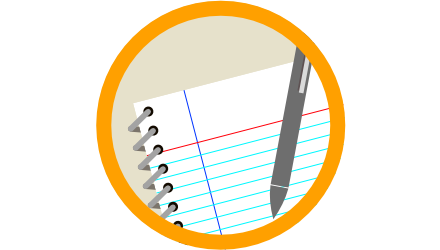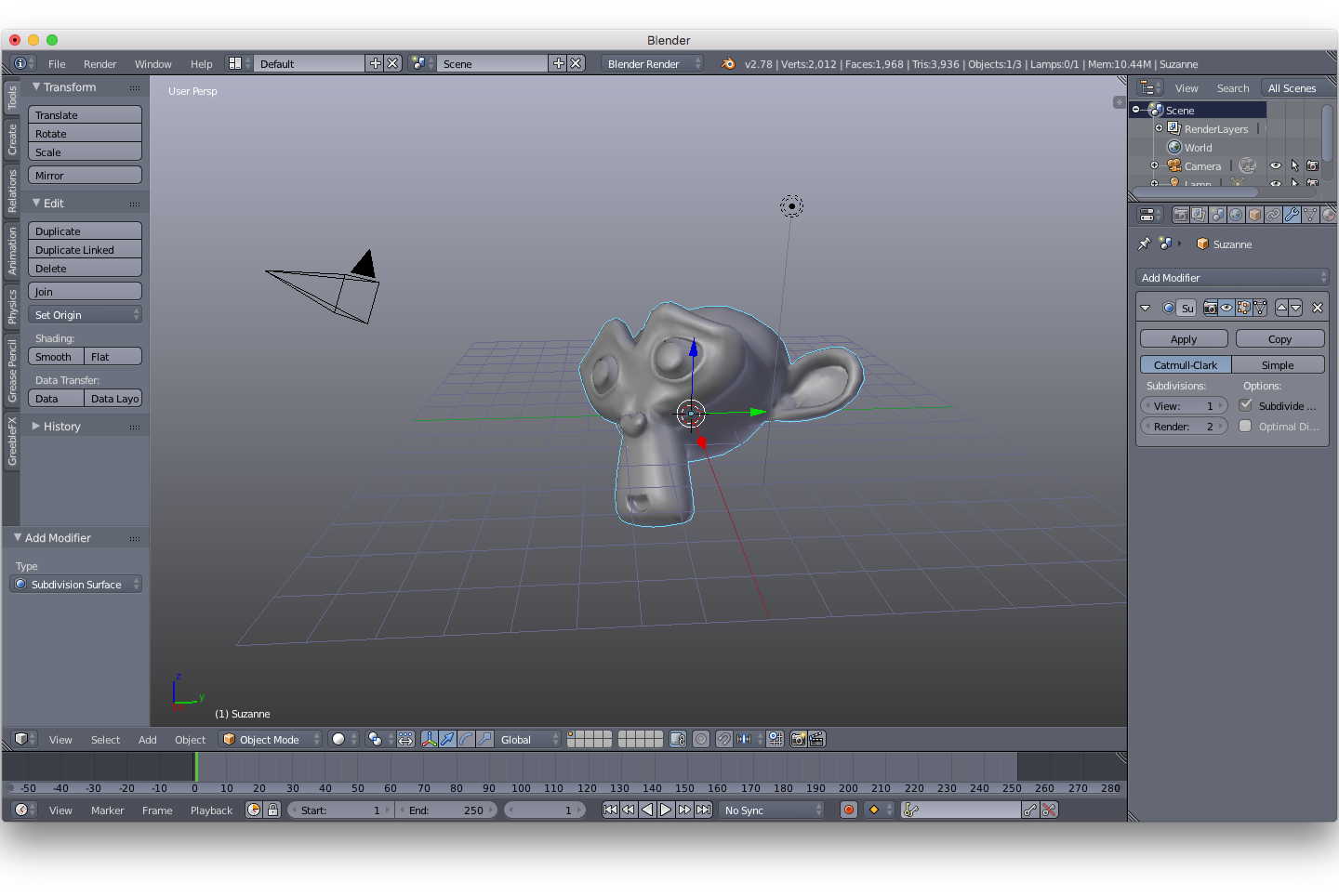For sometime now I have dabbled in CGI (Computer Generated Images). It started years ago when I worked for Rick Thomson. This was even before LightWave was out and it was all done on Amiga computers. (For those of you who have not heard of the Amiga computer, I suggest a Google search.) I had even done a channel ID for one of the local television stations. (Don’t know how long it played?) After leaving DataGraphix, I still wanted to do 3-D stuff, but could not afford any of the software on my modest budget. I eventually was able to purchase a copy of Carrara when it was still called Ray Dream Studio. I used that off and on until I discover the Open Source software program called Blender.
The biggest advantage to Blender for me is that it is free. I have since perused the internet for tutorials and documentation to learn this surprisingly deep program. I am far from being proficient at it, but I have been able to create a few images with it. Back in the early days, Rick Thomson would show me 3-D renders other had done on the Amiga. There seemed to be a proliferation of common subjects. It is these images I am attempting to replicate in order to teach myself Blender.
The first one I did was this chess set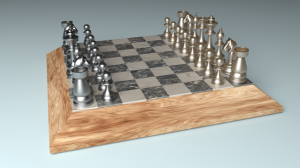 . The model for it came from one of my earlier installed copies of Ray Dream Studio, but the texturing and rendering was done in Blender using its physics based Cycles renderer.
. The model for it came from one of my earlier installed copies of Ray Dream Studio, but the texturing and rendering was done in Blender using its physics based Cycles renderer.
This next one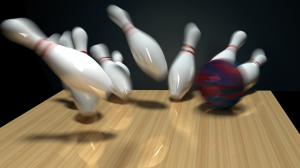 was an attempt on my part to do a render which used motion blur. Modeling the objects (bowling pins, bowling ball, alleyway) was not a problem. Even getting them to look good was not that hard. Blender has a built-in physics engine called Bullet which allows a simulation to be setup where one object can, say knock over other objects. My difficulty was setting up this simulation to give me a reasonable appearance for a bowling knocking over bowling pins. It was only after a Blender update (which is done very frequently) that allowed me to mix key-frame animation with physics based animation was I able to render this with the motion blur.
was an attempt on my part to do a render which used motion blur. Modeling the objects (bowling pins, bowling ball, alleyway) was not a problem. Even getting them to look good was not that hard. Blender has a built-in physics engine called Bullet which allows a simulation to be setup where one object can, say knock over other objects. My difficulty was setting up this simulation to give me a reasonable appearance for a bowling knocking over bowling pins. It was only after a Blender update (which is done very frequently) that allowed me to mix key-frame animation with physics based animation was I able to render this with the motion blur.
This last one (for now) is to try to recreate a martini glass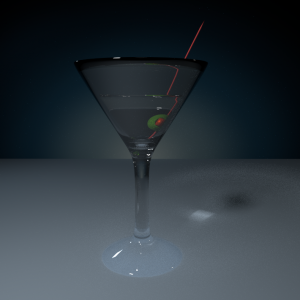 I distinctly remember seeing on an Amiga. Again, the modeling and texturing was done in Blender. The tricky part in the render was getting the transparency and refraction to look right. I still think the shadow/caustic from the glass could look better.
I distinctly remember seeing on an Amiga. Again, the modeling and texturing was done in Blender. The tricky part in the render was getting the transparency and refraction to look right. I still think the shadow/caustic from the glass could look better.
